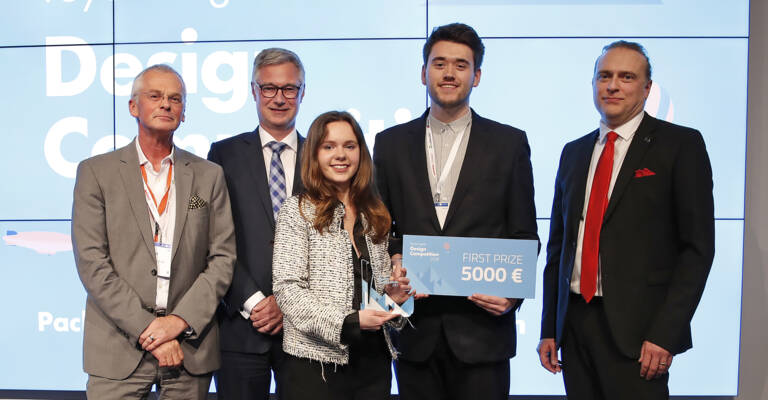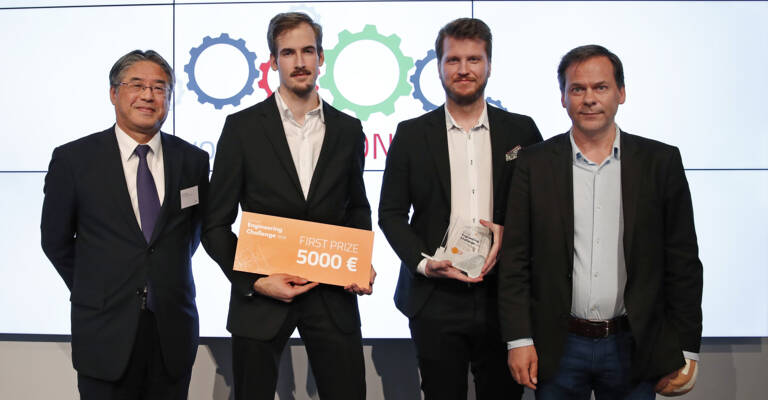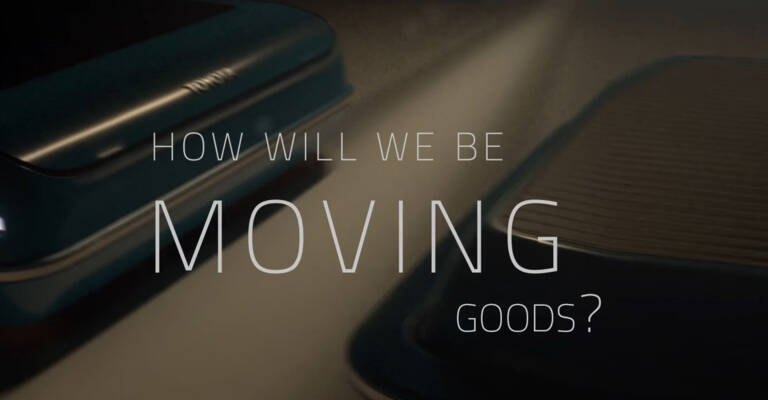Winners of the Toyota Logistic Design & Engineering Competitions announced
Logiconomi awards
Logiconomi is the word Toyota Material Handling Europe uses to describe its way of thinking - aiming for lean processes, eliminating waste, maximising efficiency and reducing cost. All with the help of innovation and collaboration with like-minded partners.
Part of the approach is the Logiconomi student awards programme, designed to encourage fresh, youthful and innovative thinking for material handling. This year the third edition of the Toyota Logistic Design Competition took place, and the first edition of the Toyota Logistics Engineering Challenge was introduced.
While thinking towards the future and taking industry trends into account, participants are encouraged to keep Toyota’s heritage and innovation in mind as inspiration.

Toyota Logistic Design Competition
First launched in 2014, the design competition was initiated to open a dialogue with young designers and welcome fresh ideas. This third edition plays into the trend of consumers not only making decisions online, but also buying online more and more. As e-commerce is becoming the norm, a fast delivery time has become an absolute priority, but is not always a reality due to underlying factors such as traffic.
With the theme “Package Delivery. Join the revolution” design students were challenged to abandon the idea of the traditional supply chain and come up with a fast, sustainable and revolutionary solution that facilitates direct delivery and optimises the last mile to customers.
The winning design was AL.PACKER, by Hannah Rayner and Matt Putman (Loughborough University, UK), an application that provides a socially sustainable solution to last-mile package delivery. It abandons the traditional supply chain and introduces a micro-entrepreneur third stakeholder that is guaranteed to accept the delivery. The end customer is able to collect the package when and where (s)he wishes to, which enhances communication, reliability and satisfaction between each stakeholder. “This solution takes a different approach by using a third-party’s social network enterprise to bridge the last mile in an efficient way. The solution is practical and easy to run, making it customer-focused,’ says Magnus Oliveira Andersson, Head of Design at Toyota Material Handling Europe.
Photo from left to right: Detlef Rahe, Professor at HfK University of the Arts Bremen; Matthias Fischer, President and CEO, Toyota Material Handling Europe; Hannah Rayner, Loughborough University UK Matt Putman, Loughborough University UK; Magnus Oliveira Andersson, Head of Design, Design Center, Toyota Material Handling Europe
Second place was for CIPS (Combined Infrastructure Parcel Service) designed by Paul Pötzelberger and Mohammad Moradi (Kunsthochschule Berlin-Weissensee, Germany). The concept offers an alternative delivery solution using the public transport bus service as the underlying eco-friendly network to provide a faster and more efficient local delivery service. The Toyota Bee by David Wolter (Lund University, Sweden) achieved third place with its HIVE system, consisting of several smaller BEE units and mobile control points, allowing for collaboration with humans, which is an important factor with the future in mind.
With a record number of 1312 votes, the People’s Award goes to Gamaru, a smart cargo solution submitted by Edgar Andres Sarmiento (Istituto d'Arte Applicata e Design, Italy).

Toyota Logistic Engineering Competition
After the success of the Toyota Logistic Design Competition, Toyota Material Handling has taken the challenge a step further by inviting Swedish engineering students and recent graduates to create innovative but feasible engineering solutions for the second edition’s winning design: the FLOCK. The FLOCK challenges how fully automated solutions can work together autonomously in a way that human-driven forklifts cannot.
All Swedish engineering students were invited to bring fresh ideas to the table in terms of Navigation and Positioning, Component Assembly and Function, Lift Mechanisms, Energy Supply, and Networking the FLOCK. Basically bridging the gap between concept and implementation.
The winning design, Woodpecker, a derivate of the FLOCK’s Mother Goose, is the solution the jury was looking for. It works together with Nestlings (successors of the FLOCK’s Ducklings doing horizontal transport) and vertically relocates cargo provided by them. The Woodpecker can also work autonomously, and is designed to be sustainable and easily serviceable. The design by Mattias Barrklev and Oskar Brännström (Linköping University) is compact and engineered with great skills based on correct calculations with the complete material handling system in mind. “This design is not only in line with current trends such as automation and connectivity, but is also close to an industrialisation level. Overall, it has the right Toyota look and feel,” says Magnus Persson, Manager Technology Solutions R&D at Toyota Material Handling Manufacturing Sweden.
Picture from the left to right: Terry Unnai, Chairman, Toyota Material Handling Europe; Mattias Barrklev, Linköping University; Oskar Brännström, Linköping University; Magnus Persson, Manager Technology Solutions, R&D Warehouse Trucks Toyota Material Handling Manufacturing Sweden.
The Nestling, a realisation of the FLOCK’s duckling engineered by Fredrik Engström, Alexander Nilsson and Valdemar Melin (Linköping University), is the runner-up. This small autonomous vehicle transports cargo on ground level and works alongside the FLOCK’s Woodpecker. Its lifting mechanism is designed for efficient space utilisation, easy maintenance and collaboration, with circular economy in mind.
Third place is for Jonas Dahlgren’s (Luleå University of Technology) electro-mechanical belt-driven lifting system. Thanks to a limited number of parts, a simple construction, and electric motors, it’s easy to assemble and energy-efficient.




